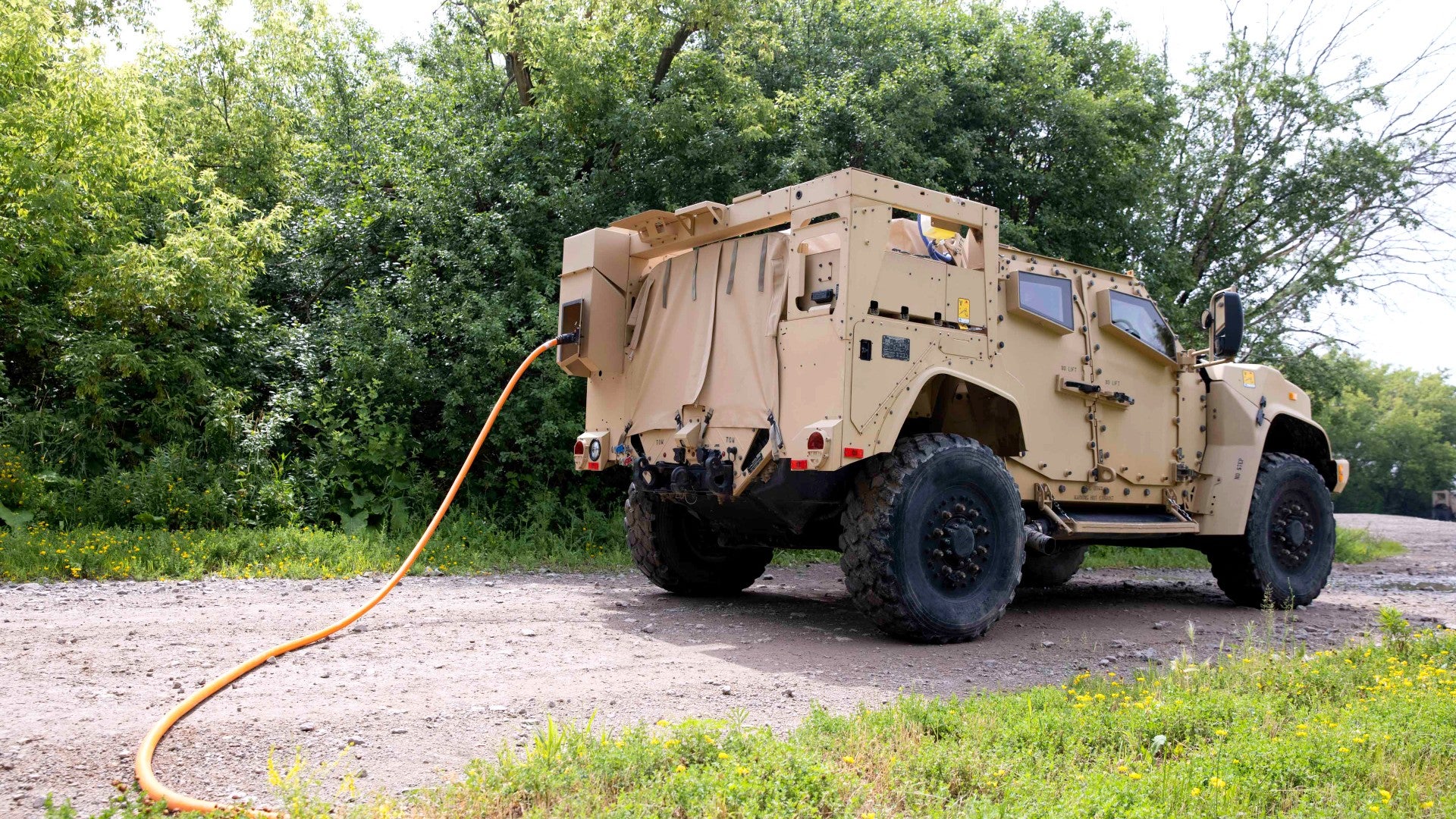Oshkosh Defense has announced the “eJLTV,” an electric hybrid version of the Joint Light Tactical Vehicle (JLTV) that is claimed to have a reduced acoustic and thermal signature when used in its new all-electric “silent drive” mode. The eJLTV will even offer the ability to power other devices using an “export power” mode. The Department of Defense (DOD) has not yet ordered any of the new eJLTVs, but the U.S. Army has previously expressed interest in all-electric or hybrid-electric vehicles. If such a capability could be added to the DOD’s projected fleet of over 49,000 JLTVs, planned as successors to the Humvee, the vehicle could potentially set a new bar for military electric vehicles. That is if its capabilities prove as revolutionary as its manufacturer claims.
In a virtual press conference attended by The War Zone today announcing the eJLTV, Oshkosh says the hybrid vehicle concept was created by pairing existing commercial electric vehicle (EV) technologies with the modular architecture of the existing JLTV. “The modular design of the Oshkosh Defense JLTV, of which we’ve built over 15,000, can be adapted to dozens of military missions, from serving as battlefield ambulances to hosting antitank weapons,” Oshkosh Defense president John Bryant told virtual attendees. “The eJLTV is yet another example of its adaptability. In fact, this capability can be added to existing JLTVs.” The new electric system can be adapted to any of the JLTV variants and while it will add some weight to the existing JLTV platform, it won’t change its dimensions or overall capabilities, according to Oshkosh.
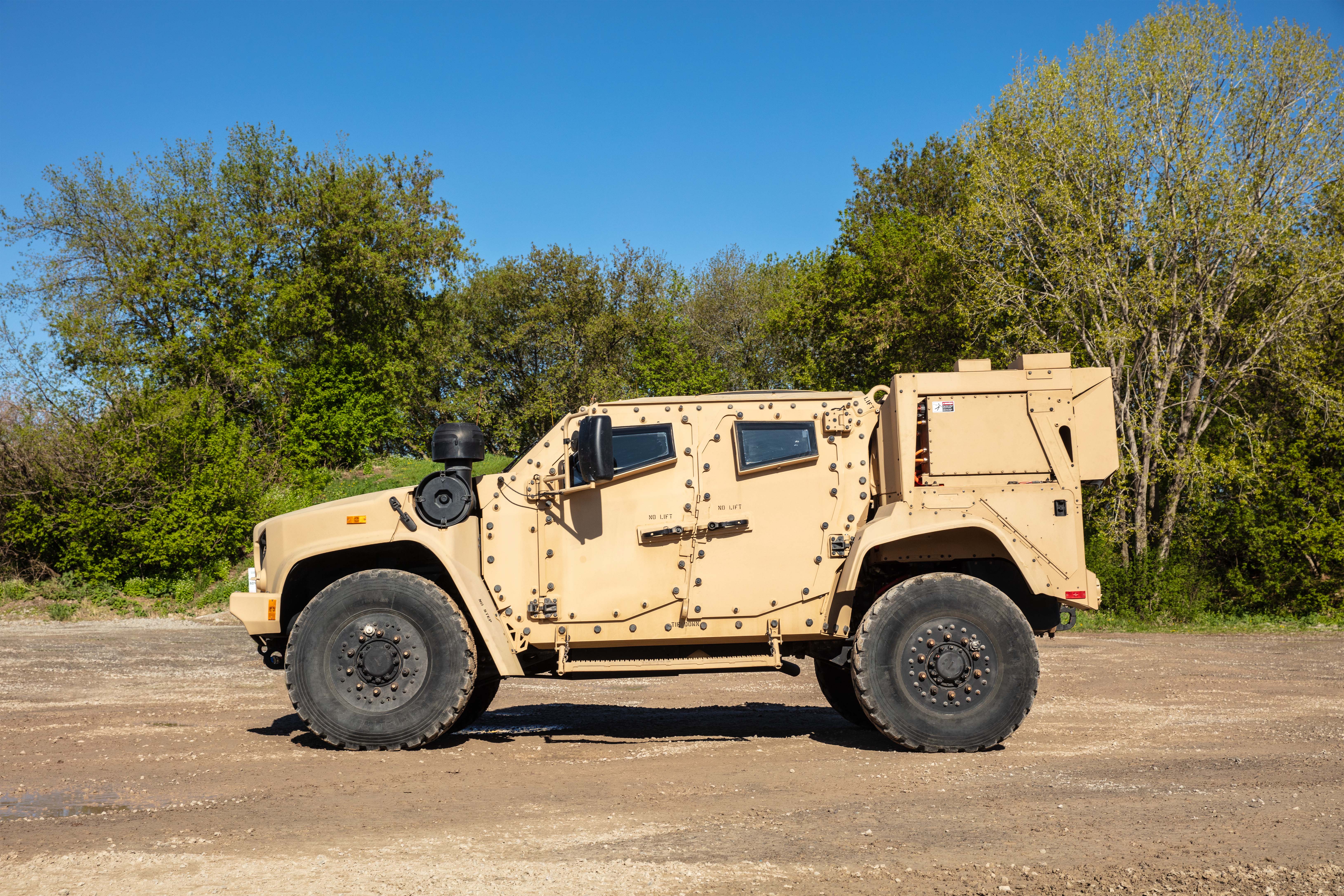
The Army and United States Marine Corps (USMC) began acquiring JLTVs in 2015 as replacements for the Humvee family. Initial estimates put the total number of planned JLTV purchases at 54,600 vehicles between the Army and USMC. However, as recently as 2020, DOD leadership has signaled that the JLTV is quickly becoming less relevant because it was designed and acquired for use in Iraq and Afghanistan where survivability against mines, IEDs, and small arms was a crucial factor. In a larger peer state conflict involving more advanced weaponry, those considerations may not be as much of an issue. The Army has since scaled back funding for new JLTVs and reduced its planned number of JLTV purchases.
One of the most significant barriers when it comes to deploying electric vehicles is the need for charging stations or other electrical infrastructure which would be hard to come by in a combat zone or forward-deployed austere environment. Oshkosh is attempting to circumvent that barrier entirely by keeping the JLTV’s existing diesel motor, which is capable of charging the vehicle’s lithium-ion battery system while in diesel mode. Oshkosh claims the vehicle’s existing motor can charge the eJLTV’s battery in just 30 minutes. While the company has no existing plans to incorporate plug-in charging capacity, executives said in today’s press conference that such a capability could easily be added in the future should a customer request it.
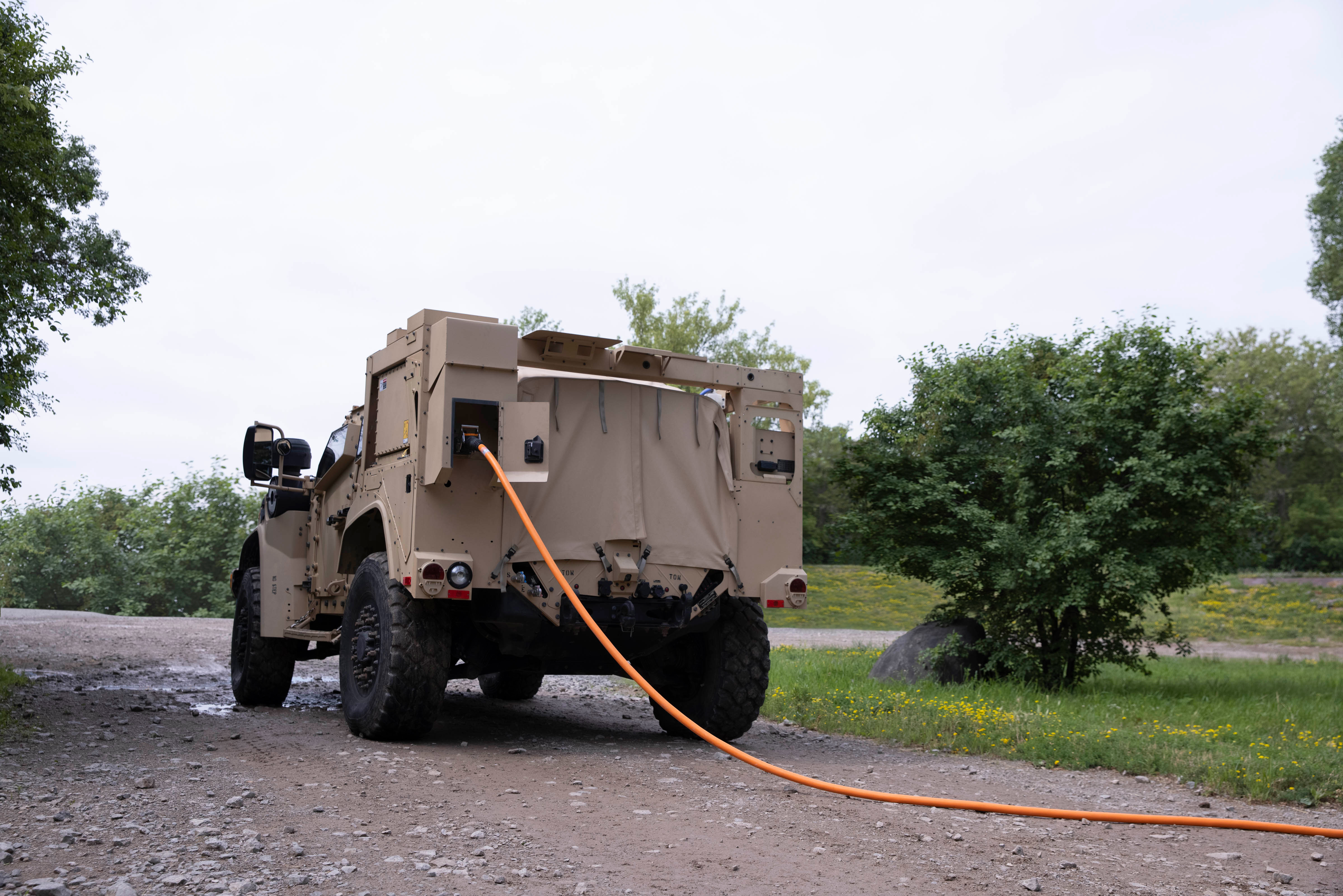
Oshkosh claims a full charge will offer 30 minutes of electric operation, depending on how the vehicle is driven, and users can switch between diesel and “silent drive” modes on the fly. During the presentation, Bryant said that with the addition of the new silent drive system, “the enemy won’t hear our eJLTV coming,” implying that this mode is far quieter than in its standard diesel operation. The vehicles also have a capability known as “extended silent watch,” although there are no further additional details about what this might entail. Presumably, this feature is similar to the electrical storage capabilities found in other ground vehicles which allow them to keep systems powered up without the need for a loud engine to be running.
One of the more unique features of the eJLTV concept is what Oshkosh is calling “export power capacity.” The eJLTV can export up to 115 kilowatts of power, making it useful as a mobile power station that eliminates the need for towed generators or other means of providing power to forward locations. While the DOD is experimenting with a variety of new modular solar generator technologies and even miniaturized nuclear reactors, supplying forward-deployed elements with energy remains a significant logistical challenge.
During the presentation, Oshkosh representatives said this export power capability could provide energy for command and control suites, directed energy weapons, or other systems that could “broaden the spectrum of what the vehicle could host.” Modern sensors, directed energy technologies, communication suites, and other subsystems consume a great deal of energy and are likely to only grow more power-intensive as time goes on. As such, a vehicle that has more power at its disposal or more efficient power generation options could prove to be very attractive.
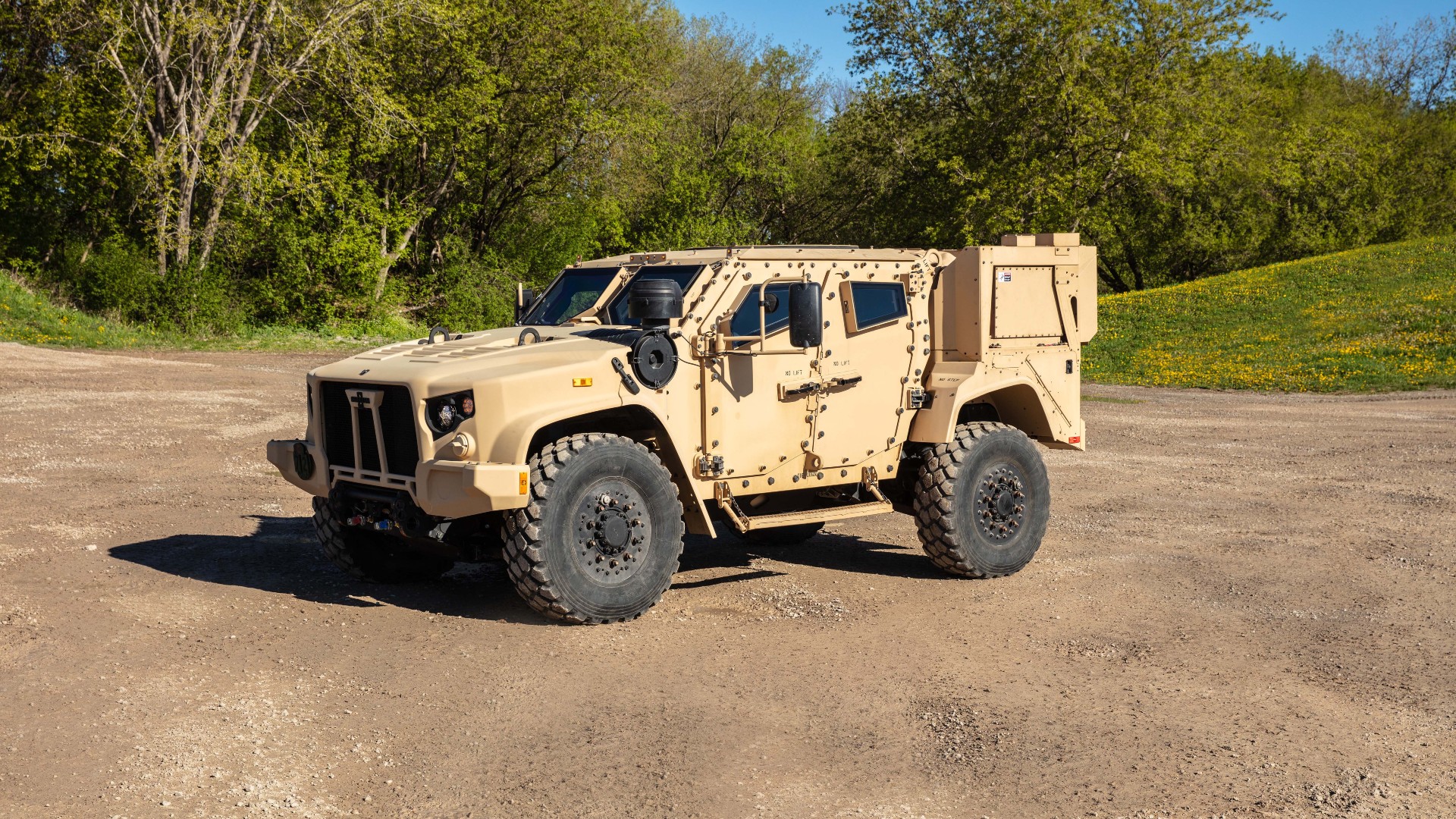
Oshkosh has filed multiple patents related to the eJLTV’s “silent drive” system, which was developed in-house using its own research and development funding as opposed to a DOD contract. The U.S. Army has not requested electric drivetrains as part of an upcoming competition for further JLTV contracts, and hybrid electric capabilities were not a requirement for any existing JLTV contracts.
While the company doesn’t have any contracts for the electric vehicles yet, Bryant told attendees at the virtual press conference that Oshkosh is “not just sitting back waiting to see what will appear in a request for proposal.” Instead, the company has built at least one full-scale technology demonstrator and has planned engagements with senior Army and Marine Corps leaders in an attempt to market the electric vehicle.
“If the Army wanted them, we’re ready to build them,” Bryant said at the press conference, while also noting that the service has stated a need for such a capability in other forms. Oshkosh has demonstrated hybrid engine tech in the past, including delivering small quantities of their diesel-electric “Propulse” engine technology which the company claims can serve “as an on-board generator with enough output to power an entire airfield or hospital.” At today’s virtual press conference, Oshkosh representatives said those vehicles have been eyed for use in disaster relief scenarios because of their export power capabilities and have been made in small quantities for durability testing.
In addition to planned cutbacks on JLTV purchases announced last year, Oshkosh’s reveal of the eJLTV program comes as the company’s current contract for producing the JLTV is set to run out. According to a previously announced timeline, Oshkosh, who is currently the sole manufacturer of JLTVs, will be required to recompete for the JLTV contract this year.
Mike Sprang, program manager for the JLTV Joint Program Office, told Breaking Defense last year that his office was already looking at incorporating some of the lithium-ion battery technologies mentioned in today’s Oshkosh press conference. “We’re saying use that architecture to not have to turn on your engine when you first need radios, when you first need HVAC [heating and cooling], and when the battery is drained to a certain point the engine turns on, charges, then shuts off again,” Sprang said.
In 2021, the Army Applications Laboratory (AAL) selected six companies to form a Power Transfer Cohort that would submit vehicle concepts to “identify and explore technologies to help power the Army’s move to EVs and allow the Army to use electric power in remote locations.” Oshkosh was not among the six companies selected.

Other private contractors have unveiled similarly ambitious alternative energy vehicle projects in the past which were not selected for DOD acquisition programs for a variety of reasons including a lack of existing infrastructure for charging or recharging battery systems, or the difficult challenges associated with the size, power, and weight of electric drivetrain systems. The Army previously experimented with hybrid diesel-electric Humvees, noting in 2011 that future battery technologies could make the concept more feasible than it was at the time.
Brig. Gen. Glenn Dean, Program Executive Officer for U.S. Army Ground Combat Systems, told Defense News last year that fully electric vehicles are still impractical for most military applications. “I’m not sure we’re going fully electric any time soon,” Dean said. “Maybe for robotic platforms. That might be the first case, because it’s about size and weight. If you took the amount of batteries with current technology that you would need to move an Abrams tank purely electrically, it’s bigger than the tank, so we have a packaging and storage problem when it comes to pure electric.”
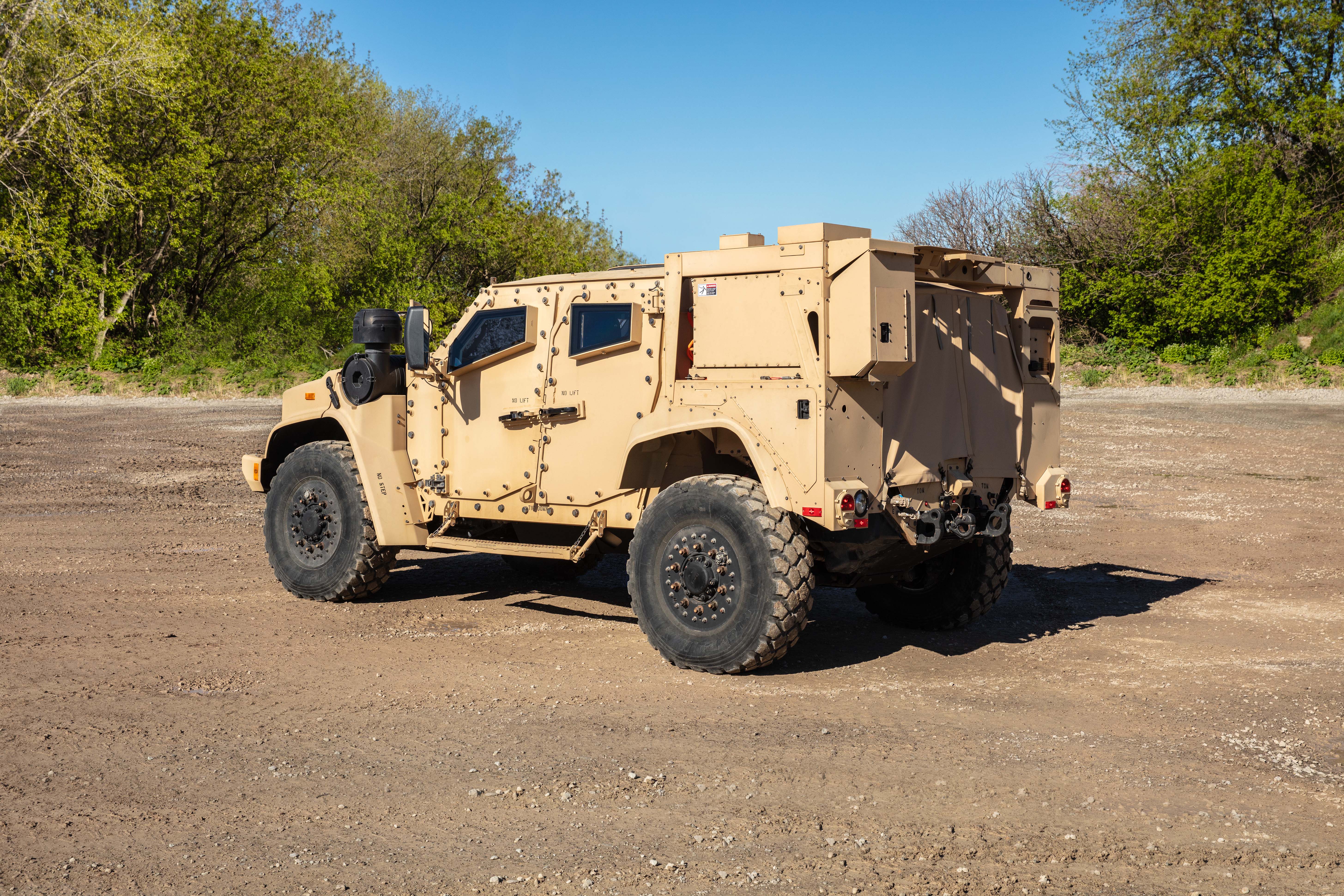
Dean added, however, that the Army has looked at the types of hybrid electric systems that Oshkosh has put forward with the eJLTV may be more feasible. “We’ve looked at that every couple of years,” Dean said. “The question is: Are we there yet? I suspect we may be at the point where hybrid electric is probably there. You’re certainly seeing it broadly enough in the commercial space that there’s probably enough power density, can probably be packaged. Whether it’s durable enough? That’s still a question.”
The JLTV’s user base is growing both around the world and within the U.S. military, with the U.S. Navy and Air Force set to receive variants. If Oshkosh can successfully develop this electric variant or even an eJLTV conversion kit, there could be a potential to grow the JLTV’s user base even further.
However, without a track record for developing electric vehicles or even a public demonstration of the eJLTV’s claimed capabilities and performance, it remains to be seen if Oshkosh’s eJLTV program will turn out to be more than a marketing campaign for keeping the JLTV contract or if the eJLTV could be among the first electric vehicles to see the battlefield.
Contact the author: Brett@TheDrive.com
